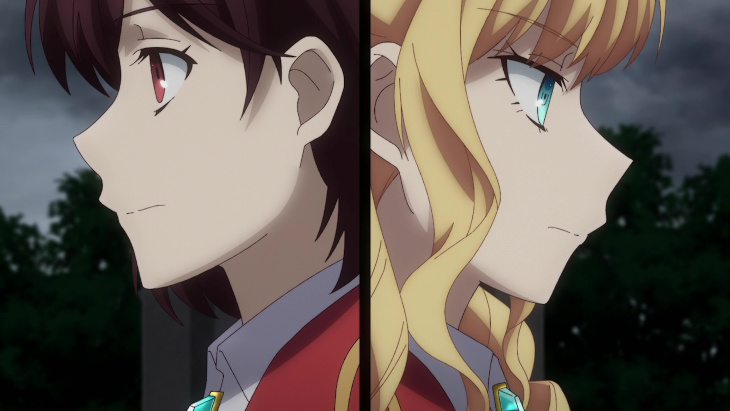
“I’ve almost never had anyone I loved return my feelings. As long as I don’t say anything, I can stay close to them, but the moment I fall in love, they’re farther away than anyone.”
Watching a low production value comedy anime can feel a bit like a gamble at the outset. Even if it is bursting with uproarious humor, there is no guarantee that the comedy will remain fresh throughout. Then what are you left with? When I think back to previous shows I’ve watched, some of the most tedious ones are those that start off funny, but turn into a slog. The most prominent example in recent memory would probably be Last Dungeon Boonies, which ran its sole joke into the ground and had nothing to fall back on. When I started watching I’m in Love with the Villainess, I thought this might be a mildly guilty pleasure comedy that I might enjoy, but wouldn’t recommend to a broad audience. However, there is a certain delight that comes from underestimating a work of art. Finding yourself taken aback by a level of writing or wit that you weren’t anticipating is always exciting. While I still wouldn’t say this was a best-of-the-season contender, it still provided an impressively engaging, and occasionally poignant, comedy that far exceeded the meager expectations I’d developed when reviewing its premiere. I don’t feel bad for underestimating the show, as it possessed all the hallmarks of a comedy that would burn out early and have nothing left to carry it. Fortunately, I was treated to the funniest comedy I watched this season, and if it returns for another season, I’ll be sure to tune in.
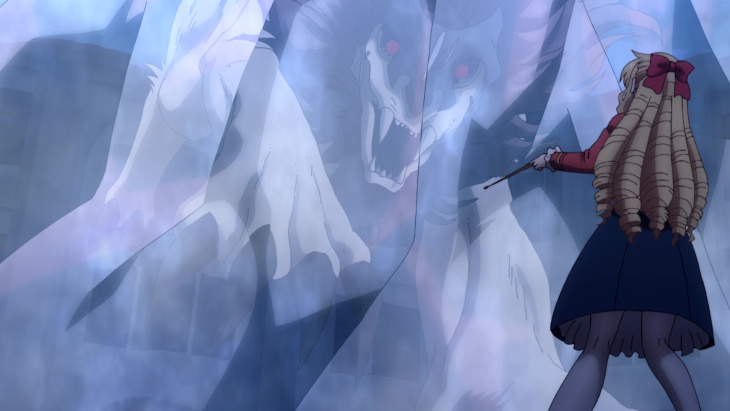
I’m in Love with the Villainess follows the exploits of an isekai-ed woman who passed away while playing her favorite otome game, and wakes up to find herself in the body of Rae Taylor, her player character from the game. As the title suggests, Rae’s favorite character in the game wasn’t any of the supposed romantic leads, but rather the villainess herself, Claire Francois. In my review of the first episode, I observed that the primary joke of the show is built around the cartoonish villain, Claire, being confronted by an even more cartoonish masochist in Rae. I worried this joke would wear thin after a while, but the show understands how to use it effectively. The key is a strong comedic chemistry between the leads. This ensures the laughs stick around longer, and even when the shtick fails to land or isn’t employed for humor, it doesn’t become annoying. Rae and Claire are both ridiculous caricatures at first glance, but there is a subtle layering of depth to each character that is unearthed over time. When the show needs humor, it can fall back on the outlandish antics, but it maintains a serious undercurrent that it can fall back on. The central element to this seriousness is Rae’s sexuality. Rae acknowledges she is and was a lesbian, both in her current and previous life, and she’s learned to accept that her romantic feelings wouldn’t be reciprocated. This factor allows Rae to work as both the comedic and emotional core of the show, using exuberant humor as a defensive measure like an animated, lesbian Chandler Bing (R.I.P.). This enables her to play at two opposite ends of the tonal spectrum without missing a beat.
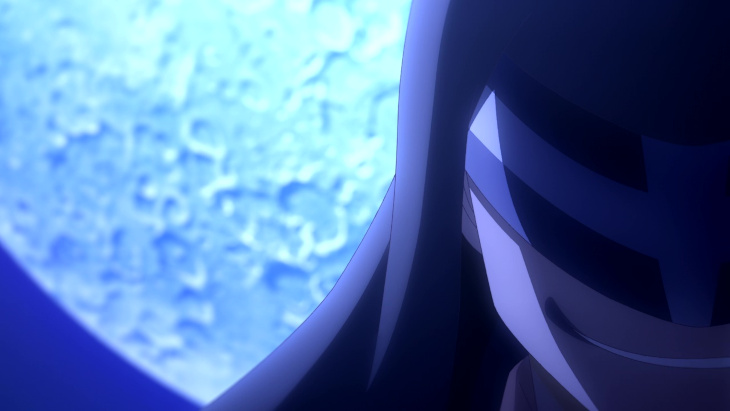
The rest of the show is awash with characters and background plots, but many don’t get the time to breathe and aren’t awarded a proper resolution. This isn’t to say none of the characters are developed. Lene, Claire’s personal maid, received a pleasant amount of exploration and a modicum of a resolution to her story arc. Also, her teaching others how to be servants made me laugh, even though I knew where the joke was going. Misha, Rae’s roommate, acts as a fun straight man to much of Rae’s insanity. Still, the three princes and Misha feel as though their stories have barely begun. This sounds like it could be intended as a strike against the show, but instead, it forges a delicate balance for the series. It’s clear that by the time we’re in sight of the finale, there is still material that could be covered, which would enable a second season. There is political intrigue and a mysterious villain who has yet to be unmasked; there are several courtships that haven’t progressed; there’s even an ultimate bad ending that Rae is striving to avoid. However, the show still succeeds in ending with a sense of finality by ensuring its primary plot ends at a satisfying point. In doing so, the creators have ensured that, should the show fail to get a second season, it still ended in a way that is satisfying. On the flip side, if a second season does come about, we have intriguing material to work with. As I viewed the final episode, I found myself asking why I wasn’t frustrated with the lack of answers, but I think it’s because the writers and staff did a delicate dance that played well to both potential outcomes. Regardless, while I’m happy with where the season chose to end, I certainly would like to see more.
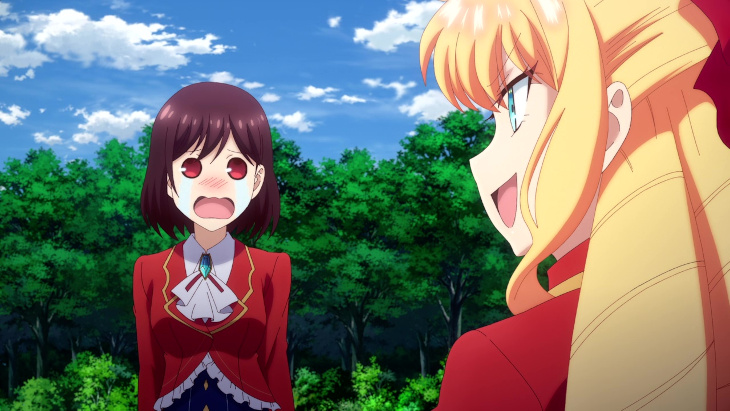
As I noted when I watched the first episode, the visual production is the weakest component of I’m in Love with the Villainess. The show regularly looks cheap, and while the characters avoid going off-model, I doubt that would be true if we weren’t dealing with simple, light novel designs. Furthermore, of the shows I followed this season, I’m in Love with the Villainess easily had the most annoying OP. I only watched it in full once or twice, and I remember thinking it stood in stark contrast to My Next Life as a Villainess’s brilliant OP from a few years prior. Honestly, comparing anything from this show’s production to My Next Life as a Villainess feels almost abusive, but at least I know Rae is down for that. Even if the visuals are subpar, I should credit the show for using them as effective vehicles for the comedy. Platinum Vision is a rather inexperienced studio, and though I can’t find an accurate headcount, I’m guessing they don’t have that many staff members. There is a delicate line between charmingly basic visuals and distractingly bad visuals, and I feel I should temper my criticism by acknowledging that they did a decent job keeping it in the former category.
Before I wrap up, a few Notes and Nitpicks:
- I was skimming through the shows coming out in winter, and I actually feel a little relieved that I’m not, at a glance, interested in more of them. There are several shows from this season I’m keeping up with, and there are a handful more that I’d like to check out.
- I’m not going to go into detail on it, but there is a subplot that involves incest, and that was a frustrating wrinkle in the storytelling. The show takes a very non-judgemental approach to the characters in question. Personally, I could use a bit more judgment there.
- There is an amusing irony that this show received some attention in the west when a handful of idiots on Twitter complained about a yuri comedy tackling the subject of growing up as a lesbian. This, of course, only served to draw attention to the show. It deserves the attention, but for less stupid reasons.
I’m in Love with the Villainess became one of the shows I actively looked forward to each week. There was no shortage of those this season, but this one proved to be the biggest surprise. I may have underestimated Frieren or The Apothecary Diaries, but this is the show I thought would ultimately be mediocre and instead proved to be a delight. It’s possibly I’m feeling a bit generous due to the pleasant surprise, but I had a good time. If you’re looking for a fun romcom, you could do a lot worse than I’m in Love with the Villainess.

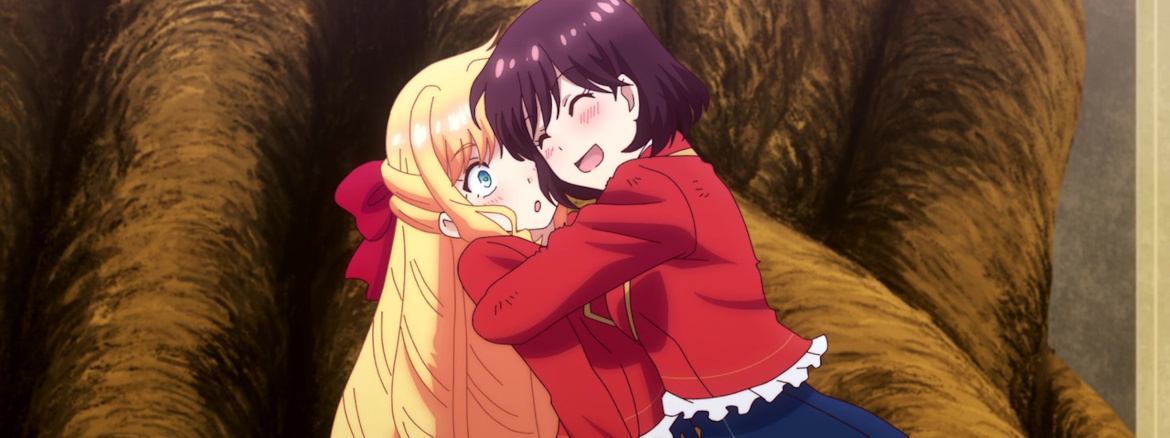
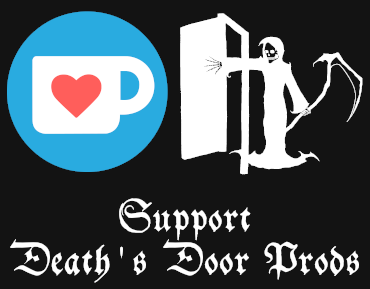

Add comment